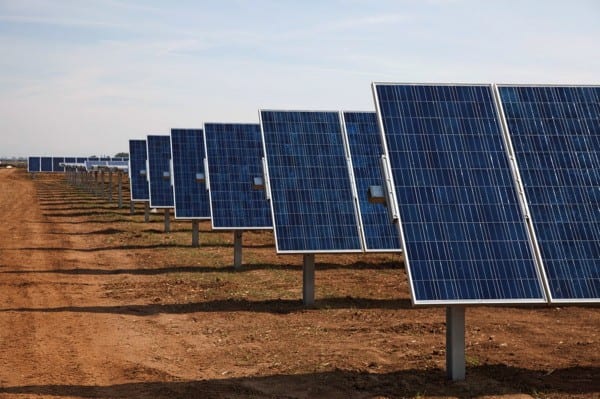Large-scale solar project costs could – and should – fall to around $80/MWh in Australia by the end of the year, an industry expert has suggested, as the price of the technology continues to fall.

Speaking at RenewEconomy’s Local Energy and Microgrids Conference in Sydney on Thursday, Norton Rose Fulbright’s global head of energy, Simon Currie, said the rapidly falling cost of big solar to close to $80/MWh was a matter of basic economics, and should be happening soon, if not today.
“(The equation) really should be, cost divided by sun, equals tariff,” Currie said.
“When you were first building utility-scale solar here, you were doing it at the same time as the resources boom,” Currie told the conference. “The reason solar costs so little in many markets is that it is, literally, plug and play. It’s time, as well, which drives costs.”
“You’ll see costs coming close to $80/MWh,” Currie said, referring to the current funding round of large scale solar by the Australian Renewable Energy Agency . “That then really starts to change the economics of microgrids, lcoal energy and what we can deliver.”
Currie’s forecast puts the fall in costs well ahead of other projections. As we reported in January, the mix of projects shortlisted for $100 million in funding from AREBA suggested solar project costs would fall below $A100/MWh by 2020.
When the funding round was first announced, ARENA said it was hoping to attract large-scale solar projects that could produce energy at a cost of $135/MWh.
However, the likes of Origin Energy has said that solar costs are probably around $80/MWh. They, though, are a buyer of solar and wanting to push prices down. Indeed, it is believed that Origin’s contract with the Moree Solar Farm is in the $80s/MWh, but this project was heavily backed by government funds.
As Currie notes, the equation for big solar changes from country to country and is still affected by a number of different metrics.
“Right now we are seeing (microgrids popping up in) Rwanda, Tanzania, PNG, UK, various parts of US, Canada,”
“There are some places where energy is so expensive that it makes sense today, no matter what the cost,” he says.
“I really believe we are in a situation where we can take islands, not just fossil fuel free, but we can change them from a balance payment situation.
“We can fundamentally change the way energy is delivered in that environment. We couldn’t do that, economically, sustainably, a few years ago.”
Then there are other examples, like Japan, where the “incredibly high” cost of the grid has served to inhibit the deployment of renewables.
But, Currie adds, “it won’t just be a cost issue, it will be what is actually the best outcome for (the location),” he said, noting that in a number of regional Australian locations, it no longer made sense to protect poles and wires when these were a potential danger to the community.
“For me that will be one of the other drivers we’ll see in markets like Australia.
“Transmissions costs continue to be a major driver in a number of markets,” Currie added. “One of the legal issues is how do you get rid of the transmission costs and …later, how does a transmission company get rid of its obligations to you as a remote user?”We are in a situation where our regulations, globally, are catching up with technology.
“We’re getting to the stage where the prices for large-scale solar in Uganda and Rwanda will not be that different … from Germany and the UK,” he said.
“I think we’re at the beginning of a much greater energy market design. We’re only a young industry… we’re talking 30-odd years maximum in most parts of the world where we have effectively been a liberalised rather than a centrally owned centrally controlled industry.
“This is gathering pace now, it’s going to be unstoppable,” he said. “The future’s going to be different.”










